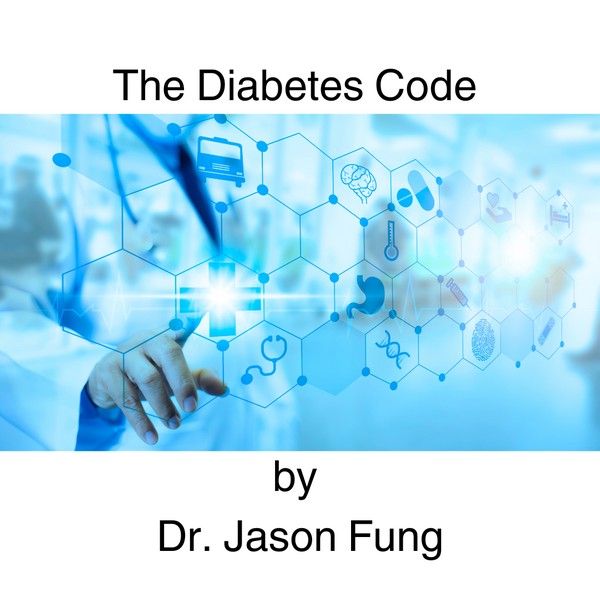Key Highlights
- Gestational diabetes, marked by glucose intolerance during pregnancy, requires careful blood sugar control.
- A healthy pregnancy with gestational diabetes includes regular exercise, a balanced diet, and glucose monitoring.
- Exercise lowers blood sugar and enhances health.
- A diet low in carbohydrates and rich in healthy animal foods aids in controlling blood sugar.
- Consistent blood glucose tracking and collaboration with healthcare professionals are vital for managing gestational diabetes effectively.
- Proper management enables women with gestational diabetes to have a healthy baby and minimize long-term risks.
Table of Contents
Understanding Gestational Diabetes
Gestational diabetes occurs when a pregnant woman’s body can’t produce enough insulin to manage blood sugar levels effectively, typically diagnosed between the 24th and 28th week of pregnancy.
This common condition, marked by elevated blood sugar during pregnancy, often resolves after giving birth.
Diagnosis is through a glucose tolerance test, where a pregnant woman drinks a sugary solution, and her blood sugar is measured at intervals.
High levels indicate gestational diabetes, largely due to insulin resistance from hormonal changes during pregnancy, affecting insulin’s effectiveness.
Unmanaged, it may lead to preeclampsia, preterm birth, and a large baby. However, with diet, exercise, and medical oversight, most women can manage gestational diabetes for a healthy pregnancy and baby.
The Role of Carbohydrates in Gestational Diabetes
Carbohydrates play a crucial role in gestational diabetes as they directly impact blood glucose levels. It is important for women with gestational diabetes to understand how carbohydrates affect their blood sugar levels.
The less carbohydrates are consumed, the easier it is to control blood glucose levels leading to healthier insulin sensitivity
The Importance of Monitoring Blood Glucose

Monitoring blood glucose is vital for managing gestational diabetes, enabling women to adjust their lifestyle and treatment as needed.
It reveals how the body reacts to foods and activities, aiding in informed diabetes management decisions. Healthcare professionals guide the monitoring frequency and goals and teach meter use.
Tools and Techniques for Effective Monitoring
Here are some tools and techniques that can be used for monitoring blood glucose levels in women with gestational diabetes:
- A blood glucose meter is a portable tool for immediate blood sugar readings with a small blood drop.
- Lancet devices, which offer adjustable depth for less discomfort, draw this sample.
- Test strips, inserted into the meter, react with glucose to provide results.
- Logging blood glucose readings, meals, activities, and medications helps identify blood sugar patterns.
- Continuous glucose monitoring (CGM) systems, with a sensor under the skin, offer real-time glucose data, aiding those needing constant monitoring.
Follow the instructions provided with the blood glucose meter and other monitoring tools to ensure accurate results.
Regularly sharing blood glucose readings with the healthcare team can help guide treatment decisions and ensure optimal blood sugar control.
Interpreting Your Results: What They Mean for You and Your Baby
Interpreting blood glucose results is crucial for gestational diabetes management, impacting treatment plans and pregnancy health.
- Normal fasting blood glucose should be under 95 mg/dL, with post-meal levels below 140 mg/dL.
- High levels suggest the need for treatment adjustments due to increased risk of complications.
- Hypoglycemia, or low blood glucose, requires prompt treatment with glucose or carbohydrates, especially if caused by medication.
Regular monitoring and healthcare team consultations ensure effective treatment, reducing complications for a healthy pregnancy.
Exercise and Gestational Diabetes
Regular physical activity is an important aspect of managing gestational diabetes. Exercise can help lower blood sugar levels, improve insulin sensitivity, and promote overall health during pregnancy.
Engaging in regular physical activity has several benefits for women with gestational diabetes:
- Physical activity helps the muscles use glucose for energy, which can lower blood sugar levels.
- Exercise improves the body’s response to insulin, making it more effective at controlling blood sugar levels.
- Regular physical activity can help maintain a healthy weight, reduce the risk of complications, and improve cardiovascular health.
Choose safe exercises and engage in regular physical activity throughout pregnancy. Aim for at least 150 minutes of moderate-intensity aerobic activity spread throughout the week, along with strength training exercises.
Safe Exercises During Pregnancy

When it comes to exercising during pregnancy, several safe options can help women with gestational diabetes maintain a healthy pregnancy. Here are some safe exercises to consider:
- Walking is a low-impact exercise that can be done at any time during pregnancy. It is a great way to stay active and can be easily incorporated into daily routines.
- Swimming and water aerobics are gentle on the joints and provide a full-body workout. The water provides support and can help alleviate discomfort.
- Prenatal yoga classes are specifically designed for pregnant women and can help improve flexibility, strength, and relaxation.
- Using a stationary bike can provide a cardiovascular workout without putting strain on the joints.
- Incorporating light to moderate strength training exercises can help build muscle strength and endurance.
Listen to your body and consult with your healthcare team before starting any exercise program. They can provide guidance on appropriate exercises and help tailor a program to your individual needs.

How Physical Activity Impacts Gestational Diabetes
Physical activity plays a crucial role in managing gestational diabetes by improving blood sugar control and promoting overall health. Here’s how physical activity impacts gestational diabetes:
- Lower blood sugar levels: Physical activity helps the muscles use glucose for energy, which can lower blood sugar levels.
- Improved insulin sensitivity: Exercise improves the body’s response to insulin, making it more effective at controlling blood sugar levels.
- Weight management: Regular physical activity can help maintain a healthy weight during pregnancy, reducing the risk of complications associated with obesity.
- Cardiovascular health: Exercise improves cardiovascular fitness, which is important for overall health and reducing the risk of heart disease.
- Stress reduction: Engaging in physical activity can help reduce stress and improve mood, promoting a positive mental outlook during pregnancy.
Engage in regular physical activity throughout pregnancy, but it is also essential to listen to your body and not overexert yourself.
Practical Dietary Changes for Gestational Diabetes Management
Consumption of monounsaturated fat from pork, lard and eggs was NOT associated with diabetes risk.
— Paul Mason MD (@DrPaulMason) March 11, 2024
Consumption of monounsaturated fat from plant foods (seed oils, fried bread, rice) WAS associated with increased diabetes risk.
Could this be a 'causal' relationship?? pic.twitter.com/v3L13J49IO
Making practical dietary changes is an essential part of managing gestational diabetes and controlling blood sugar levels. Here are some practical tips to consider:
- Focus on including a variety of animal foods, including fatty ruminant meats, A2 dairy, and healthy fats.
- Opt for foods that have a low glycemic index, as they have a minimal impact on blood sugar levels.
- Aim to eat three meals a day on average within a time window of 12 hours or less. For instance breakfast at 7 a.m., lunch at 12 and dinner at 6 p.m.
- Drink water with electrolytes and or trace minerals throughout the day to stay hydrated and support overall health.
Foods to Include for Optimal Health
There’s a significant emphasis on the relationship between iron metabolism and glucose homeostasis. Multiple scientific articles suggest that dysregulation in iron and copper homeostasis, as well as iron supplementation, can influence the risk and management of gestational diabetes and type 2 diabetes.
“iron is a strong prooxidant, and high body iron levels can damage pancreatic β-cell function and impair glucose metabolism“
Bowers, K., Yeung, E., Williams, M.A., Qi, L., Tobias, D.K., Hu, F.B. and Zhang, C., 2011. A Prospective Study of Prepregnancy Dietary Iron Intake and Risk for Gestational Diabetes Mellitus. Diabetes Care, [online] 34(7), pp.1557–1563. https://doi.org/10.2337/dc11-0134.
An ideal diet would need to maintain optimal levels of nutrients like natural Vitamin A (retinol) and bioavailable copper.
While plant-based diets are often recommended, an animal-based diet provides superior nutritional benefits.
| Complete Protein | Protein is essential for fetal development and growth, and animal-based proteins provide all the essential amino acids needed by the body. |
| Healthy Fat | Essential fatty acids, such as omega-3 and omega-6 fatty acids, are important for brain development and can be found in fatty fish like salmon and sardines. |
| Bioavailable Vitamins & Minerals | Animal-based foods also provide important vitamins and minerals, including copper, retinol, and vitamin B12. |
These nutrients are crucial for maintaining overall health during pregnancy, supporting the growth of the baby, and preventing deficiencies.
Focusing on getting animal-based foods into your meal plan in a balanced and mindful way, you can enjoy their nutritional benefits while effectively managing gestational diabetes.
Here are some foods to include for optimal health:
- Grass-Fed fatty ruminant meats and organs especially lamb, beef and liver
- Grass-Fed butter, ghee and tallow
- Pasture-Raised eggs
- Raw A2 Dairy especially from sheep or goat
Foods to Avoid to Control Blood Sugar Levels
Several studies focus on dietary interventions, including carbohydrate restriction, omega-3 fatty acid supplementation, and the impact of specific diets on insulin sensitivity and diabetes management.
This highlights the critical role of diet in preventing and managing GD and diabetes, suggesting that personalized nutrition could be a key to improving outcomes.
In addition to anything ‘fortified’ with artificial vitamins and minerals, here are some foods to limit or avoid:
| High Carbohydrate | All ultra-processed foods, starchy vegetables, sweet fruits. |
| Vegetable Oils | Contrary to popular opinion these fats can contribute to oxidative stress and increase the risk of heart disease. |
| Alcohol | Seems like it should be obvious but, alcohol is a toxin that can affect blood sugar levels and should be avoided |
Read food labels and be mindful of the ingredients and nutritional content of the foods you consume. Moderation and balance are key when it comes to managing blood sugar levels and maintaining a healthy pregnancy.
Medication and Supplements
Sometimes, medication and supplements may be necessary to manage gestational diabetes and maintain blood sugar control.
Beyond macro-nutrient management, there’s an interest in the effects of specific supplements, such as l-carnitine, and cod liver oil, on insulin sensitivity and diabetes risk.
Some studies suggest potential benefits of targeted supplementation in enhancing glucose metabolism and reducing gestational diabetes risk.
When Diet and Exercise Aren’t Enough
In some cases, diet and exercise alone may not be enough to effectively manage gestational diabetes. When blood sugar levels remain elevated despite lifestyle changes, medication options may be necessary.
Here are some situations where medication may be considered:
- If blood sugar remains high despite diet and exercise, medication may be required for control.
- Uncontrolled blood sugar increasing complication risks for mother and baby may necessitate medication for effective management.
- The decision to use medication depends on individual needs and circumstances, with healthcare teams offering personalized guidance and support.
Remember that medication should always be used in conjunction with dietary and lifestyle changes. Regular monitoring and communication with your healthcare team can help ensure that medication options are used appropriately and effectively.
Understanding Your Medication Options
There are different medication options available for managing gestational diabetes. Here are some common options.
Insulin injections are commonly used to manage gestational diabetes. Insulin helps regulate blood sugar levels by allowing glucose to enter cells for energy.
Potential side effects include:
- fast heartbeat (palpitations)
- low blood sugar (hypoglycemia)
- feeling dizzy
- changes to your vision such as blurred vision
- weight gain
- anxiety, confusion or difficulty concentrating
- injection site reactions
- sweating
- trembling or shaking
- tingling lips
- feeling hungry
At times, oral medications may be prescribed to help manage blood sugar levels. These medications work by improving insulin sensitivity or reducing glucose production in the liver.
Potential side effects vary depending on the medication and may include:
- risk of liver disease
- kidney complications
- anaemia risk
- low blood sugar
- upset stomach
- skin rash or itching
- weight gain
- upset stomach
- tiredness or dizziness
- metal taste
- gas
- bloating
- diarrhoea
- swelling of legs or ankles
- gastrointestinal upset
- allergic reactions
- interactions with other medications
Discuss the potential benefits and risks of medication options with your healthcare team. They can provide guidance on the most appropriate medication for your individual needs and monitor for any potential side effects. Regular monitoring of blood sugar levels is essential when using medication to ensure optimal control.
Conclusion
Managing gestational diabetes requires a holistic approach involving diet, exercise, blood glucose monitoring, and sometimes medication. By making informed dietary choices, incorporating safe exercises, and closely monitoring blood glucose levels, you can effectively manage gestational diabetes.
Remember, consulting with healthcare professionals is crucial for personalized guidance. Prioritize your and your baby’s health by following expert tips tailored to your specific needs. Stay proactive in understanding the impact of nutrition and lifestyle choices on gestational diabetes management to ensure a healthy pregnancy journey.
Biotiquest
Sugar Shift
- Transforms excess sugars into mannitol, which the body naturally eliminates, reducing inflammation.
- It enhances gut mannitol production, preventing harmful protein buildup.
- Increases butyrate production, improving gut and brain health.
Frequently Asked Questions
Can gestational diabetes be completely managed through diet?
Yes, in many cases, gestational diabetes can be effectively managed through diet alone. Following a balanced meal plan, monitoring blood sugar levels, and making healthy food choices can help control blood sugar levels and ensure a healthy pregnancy.
What are the long-term effects of gestational diabetes on my baby and me?
Gestational diabetes increases the risk of long-term health complications for both the mother and the baby. The mother may be at an increased risk of developing type 2 diabetes and heart disease, while the baby may have a higher risk of obesity and type 2 diabetes later in life.
Research
Afkhami-Ardekani, M. and Rashidi, M., 2009. Iron status in women with and without gestational diabetes mellitus. Journal of Diabetes and its Complications, [online] 23(3), pp.194–198. https://doi.org/10.1016/j.jdiacomp.2007.11.006.
Aigner, E., 2014. Dysregulation of iron and copper homeostasis in nonalcoholic fatty liver. World Journal of Hepatology, [online] 7(2), p.177. https://doi.org/10.4254/wjh.v7.i2.177.
Athinarayanan SJ, Adams RN, Hallberg SJ, et al. Long-Term Effects of a Novel Continuous Remote Care Intervention Including Nutritional Ketosis for the Management of Type 2 Diabetes: A 2-year Non-randomized Clinical Trial. Frontiers in Endocrinology. 2019; 10:348. doi: 10.3389/fendo.2019.00348.
Boden G, Sargrad K, Homko C, et al. Effect of a Low-Carbohydrate Diet on Appetite, Blood Glucose Levels, and Insulin Resistance in Obese Patients with Type 2 Diabetes. Ann Intern Med. 2005. https://doi.org/10.7326/0003-4819-142-6-200503150-00006.
Bo, S., Menato, G., Villois, P., Gambino, R., Cassader, M., Cotrino, I. and Cavallo-Perin, P., 2009. Iron supplementation and gestational diabetes in midpregnancy. American Journal of Obstetrics and Gynecology, [online] 201(2), pp.158.e1-158.e6. https://doi.org/10.1016/j.ajog.2009.04.049.
Bowers, K., Yeung, E., Williams, M.A., Qi, L., Tobias, D.K., Hu, F.B. and Zhang, C., 2011. A Prospective Study of Prepregnancy Dietary Iron Intake and Risk for Gestational Diabetes Mellitus. Diabetes Care, [online] 34(7), pp.1557–1563. https://doi.org/10.2337/dc11-0134.
Bruls, Y.M., de Ligt, M., Lindeboom, L., Phielix, E., Havekes, B., Schaart, G., Kornips, E., Wildberger, J.E., Hesselink, M.K., Muoio, D., Schrauwen, P. and Schrauwen-Hinderling, V.B., 2019. Carnitine supplementation improves metabolic flexibility and skeletal muscle acetylcarnitine formation in volunteers with impaired glucose tolerance: A randomised controlled trial. eBioMedicine, [online] 49, pp.318–330. https://doi.org/10.1016/j.ebiom.2019.10.017.
Courcoulas AP, Gallagher JW, Neiberg RH, et al. Bariatric Surgery vs Lifestyle Intervention for Diabetes Treatment: 5-Year Outcomes From a Randomized Trial. J Clin Endocrinol Metab. 2020 Mar 1;105(3):866–76. doi: 10.1210/clinem/dgaa006. PMID: 31917447; PMCID: PMC7032894.
de Souza, R.J., Mente, A., Maroleanu, A., Cozma, A.I., Ha, V., Kishibe, T., Uleryk, E., Budylowski, P., Schünemann, H., Beyene, J. and Anand, S.S., 2015. Intake of saturated and trans unsaturated fatty acids and risk of all cause mortality, cardiovascular disease, and type 2 diabetes: systematic review and meta-analysis of observational studies. BMJ, [online] p.h3978. https://doi.org/10.1136/bmj.h3978.
Elliott RB, Harris DP, Hill JP, Bibby NJ, Wasmuth HE. Type I (insulin-dependent) diabetes mellitus and cow milk: casein variant consumption. Diabetologia. 1999 Mar;42(3):292-6. doi: 10.1007/s001250051153. Erratum in: Diabetologia 1999 Aug;42(8):1032. PMID: 10096780.
Evert AB, Dennison M, Gardner CD, et al. Nutrition Therapy for Adults With Diabetes or Prediabetes: A Consensus Report. Diabetes Care 1 May 2019; 42 (5): 731–754. https://doi.org/10.2337/dci19-0014.
Feinman, R., 2016. Carbohydrates for people with diabetes is not cautious. Nutrition, [online] 32(1), pp.153–154. https://doi.org/10.1016/j.nut.2015.08.012.
Feinman RD, Pogozelski WK, Astrup A, Bernstein RK, Fine EJ, Westman EC, Accurso A, Frassetto L, Gower BA, McFarlane SI, Nielsen JV, Krarup T, Saslow L, Roth KS, Vernon MC, Volek JS, Wilshire GB, Dahlqvist A, Sundberg R, Childers A, Morrison K, Manninen AH, Dashti HM, Wood RJ, Wortman J, Worm N. Dietary carbohydrate restriction as the first approach in diabetes management: critical review and evidence base. Nutrition. 2015 Jan;31(1):1-13. doi: 10.1016/j.nut.2014.06.011. Epub 2014 Jul 16. Erratum in: Nutrition. 2019 Jun;62:213. PMID: 25287761.
Fernández-Real, J.M., McClain, D. and Manco, M., 2015. Mechanisms Linking Glucose Homeostasis and Iron Metabolism Toward the Onset and Progression of Type 2 Diabetes. Diabetes Care, [online] 38(11), pp.2169–2176. https://doi.org/10.2337/dc14-3082.
Galloway, S.D.R., Craig, T.P. and Cleland, S.J., 2010. Effects of oral l-carnitine supplementation on insulin sensitivity indices in response to glucose feeding in lean and overweight/obese males. Amino Acids, [online] 41(2), pp.507–515. https://doi.org/10.1007/s00726-010-0770-5.
Gregg EW, Chen H, Wagenknecht LE, et al. Association of an Intensive Lifestyle Intervention With Remission of Type 2 Diabetes. JAMA. 2012;308(23):2489–2496. doi:10.1001/jama.2012.67929.
Haap, M., Machann, J., von Friedeburg, C., Schick, F., Stefan, N., Schwenzer, N.F., Fritsche, A., Häring, H.U. and Thamer, C., 2011. Insulin Sensitivity and Liver Fat: Role of Iron Load. The Journal of Clinical Endocrinology & Metabolism, [online] 96(6), pp.E958–E961. https://doi.org/10.1210/jc.2010-2682.
Huang, J., 2015. Association of insulin resistance with serum ferritin and aminotransferases-iron hypothesis. World Journal of Experimental Medicine, [online] 5(4), p.232. https://doi.org/10.5493/wjem.v5.i4.232.
Kataria, Y., Wu, Y., Horskjær, P., Mandrup-Poulsen, T. and Ellervik, C., 2018. Iron Status and Gestational Diabetes—A Meta-Analysis. Nutrients, [online] 10(5), p.621. https://doi.org/10.3390/nu10050621.
Krisai, P., Leib, S., Aeschbacher, S., Kofler, T., Assadian, M., Maseli, A., Todd, J., Estis, J., Risch, M., Risch, L. and Conen, D., 2016. Relationships of iron metabolism with insulin resistance and glucose levels in young and healthy adults. European Journal of Internal Medicine, [online] 32, pp.31–37. https://doi.org/10.1016/j.ejim.2016.03.017.
Lean ME, Leslie WS, Barnes AC, Brosnahan N, et al. Durability of a primary care-led weight-management intervention for remission of type 2 diabetes: 2-year results of the DiRECT open-label, cluster-randomised trial. Lancet 2019 May 01.https://doi.org/10.1016/S2213-8587(19)30068-3.
Laugesen M, Elliott R. Ischaemic heart disease, Type 1 diabetes, and cow milk A1 beta-casein. N Z Med J. 2003 Jan 24;116(1168):U295. PMID: 12601419.
Machairiotis, N., Vasilakaki, S., Minns, L. and Malakasis, A., 2021. Nutrients that modulate gestational diabetes mellitus: A systematic review of cohort studies Jan 2019‐Jan 2020. International Journal of Clinical Practice, 75(8), p.e14033.
McLachlan CN. beta-casein A1, ischaemic heart disease mortality, and other illnesses. Med Hypotheses. 2001 Feb;56(2):262-72. doi: 10.1054/mehy.2000.1265. PMID: 11425301.
McKenzie AL, Hallberg SJ, Creighton BC, et al. A Novel Intervention Including Individualized Nutritional Recommendations Reduces Hemoglobin A1c Level, Medication Use, and Weight in Type 2 Diabetes. JMIR Diabetes. 2017 Mar 7;2(1):e5. doi: 10.2196/diabetes.6981. PMID: 30291062; PMCID: PMC6238887.
Molfino, A., Cascino, A., Conte, C., Ramaccini, C., Fanelli, F.R. and Laviano, A., 2010. Caloric Restriction and L‐Carnitine Administration Improves Insulin Sensitivity in Patients With Impaired Glucose Metabolism. Journal of Parenteral and Enteral Nutrition, [online] 34(3), pp.295–299. https://doi.org/10.1177/0148607109353440.
National Diabetes Statistics Report: Estimates of Diabetes and Its Burden in the United States. Accessed at: https://www.cdc.gov/diabetes/data/statistics-report/index.html.
Ogundipe, E., Samuelson, S. and Crawford, M.A., 2020. Gestational diabetes mellitus prediction? A unique fatty acid profile study. Nutrition & Diabetes, [online] 10(1). https://doi.org/10.1038/s41387-020-00138-9.
Okuyama, H., Langsjoen, P.H., Ohara, N., Hashimoto, Y., Hamazaki, T., Yoshida, S., Kobayashi, T. and Langsjoen, A.M., 2016. Medicines and Vegetable Oils as Hidden Causes of Cardiovascular Disease and Diabetes. Pharmacology, [online] 98(3–4), pp.134–170. https://doi.org/10.1159/000446704.
Olafsdottir, A.S., Magnusardottir, A.R., Thorgeirsdottir, H., Hauksson, A., Skuladottir, G.V. and Steingrimsdottir, L., 2005. Relationship between dietary intake of cod liver oil in early pregnancy and birthweight. BJOG: an International Journal of Obstetrics & Gynaecology, 112(4), pp.424-429.
Ostadrahimi, A., Mohammad-Alizadeh, S., Mirgafourvand, M., Yaghoubi, S., Shahrisa, E. and Farshbaf-Khalili, A., 2016. Effects of fish oil supplementation on gestational diabetes mellitus (GDM): a systematic review. Iranian Red Crescent Medical Journal, 18(11).
Petry, C.J., 2022. Iron Supplementation in Pregnancy and Risk of Gestational Diabetes: A Narrative Review. Nutrients, [online] 14(22), p.4791. https://doi.org/10.3390/nu14224791.
Rajpathak, S.N., Crandall, J.P., Wylie-Rosett, J., Kabat, G.C., Rohan, T.E. and Hu, F.B., 2009. The role of iron in type 2 diabetes in humans. Biochimica et Biophysica Acta (BBA) - General Subjects, [online] 1790(7), pp.671–681. https://doi.org/10.1016/j.bbagen.2008.04.005.
Riddle MC, Cefalu WT, Evans PH et al. Consensus Report: Definition and Interpretation of Remission in Type 2 Diabetes. Diabetes Care 1 October 2021; 44 (10): 2438–2444. https://doi.org/10.2337/dci21-0034.
Robert M, Ferrand-Gaillard C, Disse E, et al. Predictive factors of type 2 diabetes remission 1 year after bariatric surgery: impact of surgical techniques. Obes Surg. 2013 Jun;23(6):770-5. doi: 10.1007/s11695-013-0868-4. PMID: 23355293.
Ruggenenti, P., Cattaneo, D., Loriga, G., Ledda, F., Motterlini, N., Gherardi, G., Orisio, S. and Remuzzi, G., 2009. Ameliorating Hypertension and Insulin Resistance in Subjects at Increased Cardiovascular Risk. Hypertension, [online] 54(3), pp.567–574. https://doi.org/10.1161/hypertensionaha.109.132522.
Samimi, M., Jamilian, M., Asemi, Z. and Esmaillzadeh, A., 2015. Effects of omega-3 fatty acid supplementation on insulin metabolism and lipid profiles in gestational diabetes: Randomized, double-blind, placebo-controlled trial. Clinical Nutrition, [online] 34(3), pp.388–393. https://doi.org/10.1016/j.clnu.2014.06.005.
Sedaghat, F., Akhoondan, M., Ehteshami, M., Aghamohammadi, V., Ghanei, N., Mirmiran, P. and Rashidkhani, B., 2017. Maternal dietary patterns and gestational diabetes risk: a case-control study. Journal of diabetes research, 2017.
Stene, L.C., Joner, G. and Norwegian Childhood Diabetes Study Group, 2003. Use of cod liver oil during the first year of life is associated with lower risk of childhood-onset type 1 diabetes: a large, population-based, case-control study. The American journal of clinical nutrition, 78(6), pp.1128-1134.
Stene, L.C., Ulriksen, J., Magnus, P. and Joner, G., 2000. Use of cod liver oil during pregnancy associated with lower risk of Type I diabetes in the offspring. Diabetologia, 43, pp.1093-1098.
Syrovatka, P., Kraml, P., Potockova, J., Fialova, L., Vejrazka, M., Crkovska, J. and Andel, M., 2009. Relationship between Increased Body Iron Stores, Oxidative Stress and Insulin Resistance in Healthy Men. Annals of Nutrition and Metabolism, [online] 54(4), pp.268–274. https://doi.org/10.1159/000229507.
Taghizadeh, M., Jamilian, M., Mazloomi, M., Sanami, M. and Asemi, Z., 2016. A randomized-controlled clinical trial investigating the effect of omega-3 fatty acids and vitamin E co-supplementation on markers of insulin metabolism and lipid profiles in gestational diabetes. Journal of Clinical Lipidology, [online] 10(2), pp.386–393. https://doi.org/10.1016/j.jacl.2015.12.017.
Terence T. Lao, Lai-Fong Ho; Impact of Iron Deficiency Anemia on Prevalence of Gestational Diabetes Mellitus. Diabetes Care 1 March 2004; 27 (3): 650–656. https://doi.org/10.2337/diacare.27.3.650
Volk BM, McKenzie AL, Athinarayanan SJ, et al. A Population Shift in Meeting Glycemic Targets Following Five Years of a Very-Low-Carbohydrate Intervention (VLCI) and Continuous Remote Care (CRC) . Diabetes 1 June 2022; 71 (Supplement_1): 1176–P. https://doi.org/10.2337/db22-1176-P.
Wlazlo, N., van Greevenbroek, M.M.J., Ferreira, I., Jansen, E.H.J.M., Feskens, E.J.M., van der Kallen, C.J.H., Schalkwijk, C.G., Bravenboer, B. and Stehouwer, C.D.A., 2014. Iron metabolism is prospectively associated with insulin resistance and glucose intolerance over a 7-year follow-up period: the CODAM study. Acta Diabetologica, [online] 52(2), pp.337–348. https://doi.org/10.1007/s00592-014-0646-3.
Yang, S., Lin, R., Si, L., Li, Z., Jian, W., Yu, Q. and Jia, Y., 2019. Cod-liver oil improves metabolic indices and hs-CRP levels in gestational diabetes mellitus patients: a double-blind randomized controlled trial. Journal of diabetes research, 2019.
Zhang, C. and Rawal, S., 2017. Dietary iron intake, iron status, and gestational diabetes. The American Journal of Clinical Nutrition, [online] 106, pp.1672S-1680S. https://doi.org/10.3945/ajcn.117.156034.
Zhou, X., Liu, R., Duan, S., Huang, G., Ye, Y. and Kong, Y., 2016. High Glucose Enhances oxLDL-Induced Apoptosis in Human Renal Proximal Tubular Epithelial Cells Largely via Inducing Lectin-Like ox-LDL Receptor-1. Pharmacology, [online] 98(1–2), pp.20–28. https://doi.org/10.1159/000444934.
Zhou, Z., Chen, G., Li, P., Rao, J., Wang, L., Yu, D., Lin, D., Fan, D., Ye, S., Wu, S., Gou, X., Wang, H
., Guo, X., Lin, L., Suo, D. and Liu, Z., 2021. Prospective association of metal levels with gestational diabetes mellitus and glucose: A retrospective cohort study from South China. Ecotoxicology and Environmental Safety, [online] 210, p.111854. https://doi.org/10.1016/j.ecoenv.2020.111854.
9 Vital Travel Tips for Pregnant Women
Key Takeaways Consult Your Doctor: Always discuss travel plans with your healthcare provider to ensure safety throughout your pregnancy. Pack Smart: Essential items for pregnant…
Pre-Eclampsia: Causes, Symptoms, and Treatment
Key Takeaways Pre-eclampsia involves high blood pressure and organ damage after 20 weeks of pregnancy. Early diagnosis through regular prenatal care is vital for managing…
Natural Childbirth: Pain Management & Breathing
Key Takeaways Natural childbirth focuses on managing labor without medical interventions. Breathing techniques help alleviate pain and keep the body relaxed. Movement, positioning, and hydrotherapy…
Childbirth Preparation: Steps for a Smooth Delivery
Key Takeaways Having a solid support system can ease the physical and emotional challenges of labor. Proper nutrition and regular exercise prepare your body for…
What is the Best Nutrition for Pregnancy?
Key Takeaways Eating wisely during pregnancy impacts maternal and fetal health. Prioritize foods with a high bioavailability of nutrients. Essential fatty acids support brain and…
Breast Milk or Formula: Which Is Healthier for Your Baby?
Key Highlights Breast milk is ideal for infants, offering essential nutrients, cognitive development support, and immune strengthening. Breastfeeding benefits both baby and mother, reducing the…
Birth Plan Guide: Planning Your Birth Experience
Key Takeaways A birth plan outlines your preferences for labor, delivery, and postpartum care. It helps communicate your wishes to your healthcare team. Flexibility is…
Postpartum Recovery: What Happens After Childbirth
Key Takeaways Postpartum recovery can take weeks or months depending on the type of birth. Physical recovery includes managing pain, bleeding, and any tearing or…
Do Artificial Sweeteners Cause Weight Gain? The Surprising Truth
Key Takeaways – Artificial sweeteners may disrupt gut microbiome balance, impacting digestion and immune health….
What You Need to Know About Salt and Your Health
Table of ContentsThe Health Benefits of Unrefined Sea SaltElectrolyte BalanceMineral ContentImproved HydrationBoosted Energy LevelsImmune SupportImproved…
How To Optimize Your Weight Loss Efforts
1. Get Your Beauty Sleep for Optimal Weight Loss2. Natural Solutions for Weight Loss3. Stress…
11 Amazing Tips to Improve Your Sleep Quality
Limit Power NapsModulate Sunlight ExposurePay Attention to CaffeineSchedule BedtimePlan Ahead for DinnertimeMelatonin: Not what you…
7 Simple Tips for Lowering Blood Pressure Naturally
Maintaining healthy blood pressure levels is essential for overall well-being, as high blood pressure can…
Proteolytic Enzymes and Heart Health: What the Research Shows
Your heart works tirelessly to pump blood throughout your body, delivering essential nutrients and oxygen…
Is Eating Sugar Really That Bad For Your Health?
Should You Really Be Concerned? In short, YES! Thank you, that’s all folks, and do…
Natural Treatment for Irritable Bowel Syndrome (IBS): Effective Remedies Explored
Understanding IBSSymptoms of IBSRole of Diet in IBSNatural Remedies for IBSSupplements for IBSRole of Probiotics…
Medium Chain Triglycerides (MCTs): Uncovering 5 Health Benefits
This potent, natural source of energy has gained considerable attention in recent years for its…
7 Remedies for Kidney Stones: A Comprehensive Guide
Key Takeaways Staying well-hydrated and adopting a balanced diet can help prevent kidney stones. Knowing…
Berberine Has 11 More Incredible Benefits Than You Thought
Berberine is a compound found in several plants that has been used for centuries in…


































